Shorter days are here, the snow is accumulating, and it’s feeling more like winter with each passing day. Nature is encouraging us to take a reset and frankly, we’re ready for it. It’s times like these that we reach for sturdy mugs filled to the brim with rich, creamy, uniquely flavorful and expressive Drinking Chocolate. Haven’t had a sip of the goods yet? Read/Watch on to learn how to make your own!
History of Drinking Chocolate
Drinking chocolate carries a much deeper history than the humble chocolate bar. For thousands of years, ancient central American tribes have been consuming this ritualistic beverage with spices, masa, and little to no sweetening added. It wasn’t until the age of colonization when chocolate was brought over to Europe, that sugars and fats were introduced to this sacred substance. With ready access to milk and cane sugar, the advent of drinking chocolate as we know it today was born.
The first chocolate bar was produced in the 1840s and we’ve never looked back, but we’ve been drinking it all along. Take a journey with us to find out all the unique ways we can make drinking chocolate today.
Drinking Chocolate Styles
Most hot, liquid chocolate can be divided into two distinct categories: Hot Cocoa and Drinking Chocolate.
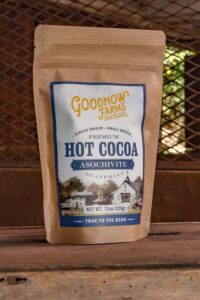 Hot cocoa is what we remember from childhood. It’s made with cocoa powder, milk powder, sugar, and is by far the easiest to make. It drinks the thinnest and expresses the least terroir (a sense of place through flavor), but will always transport you back to days when the snow was regularly taller than your view of the world. Goodnow Farms makes an excellent selection of cocoas that will leave you nostalgic while sending your tastebuds around the world.
Hot cocoa is what we remember from childhood. It’s made with cocoa powder, milk powder, sugar, and is by far the easiest to make. It drinks the thinnest and expresses the least terroir (a sense of place through flavor), but will always transport you back to days when the snow was regularly taller than your view of the world. Goodnow Farms makes an excellent selection of cocoas that will leave you nostalgic while sending your tastebuds around the world.
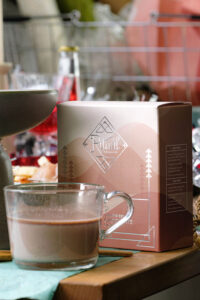 Drinking chocolate is defined in its name: chocolate broken down for ease of emulsification. Whether it’s shredded, ground, chopped, or otherwise prepared, these selections are prepared to melt and dissolve in whatever milk, water, or alternative you’re using as a base. Ritual Chocolate makes a delicious range of single origin drinking chocolates that are reflective of the same regions their bars come from.
Drinking chocolate is defined in its name: chocolate broken down for ease of emulsification. Whether it’s shredded, ground, chopped, or otherwise prepared, these selections are prepared to melt and dissolve in whatever milk, water, or alternative you’re using as a base. Ritual Chocolate makes a delicious range of single origin drinking chocolates that are reflective of the same regions their bars come from.
Both styles prioritize less time whisking over your stove in favor of more time getting cozy in your PJs with a cup of the good stuff. Taste for beverages that express the same as your favorite single origin chocolate bars, dial your prep with our tips below, and let yourself slip into the indulgence.
All About That Technique
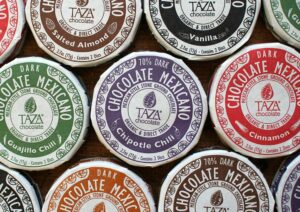 The beauty of drinking chocolate is that with enough determination, you can make any chocolate deliciously drinkable. Purpose made mixes (hot cocoa, drinking chocolate) are easiest, coarse ground bars (think Taza, Cuna de Piedra, and Sabadi) involve a bit more labor, and with enough elbow grease, any chocolate can be whipped to liquid luxury. Whichever difficulty level you choose here, any technique below will work. With increasing levels of difficulty come richer levels of texture, flavor, and overall enjoyment.
The beauty of drinking chocolate is that with enough determination, you can make any chocolate deliciously drinkable. Purpose made mixes (hot cocoa, drinking chocolate) are easiest, coarse ground bars (think Taza, Cuna de Piedra, and Sabadi) involve a bit more labor, and with enough elbow grease, any chocolate can be whipped to liquid luxury. Whichever difficulty level you choose here, any technique below will work. With increasing levels of difficulty come richer levels of texture, flavor, and overall enjoyment.
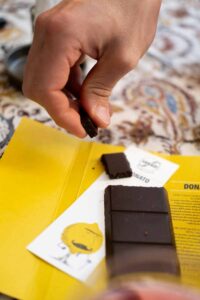 Technique 1: Frothing
Technique 1: Frothing
Have a milk steamer or an electric frother? You’re in luck and your drinking chocolate is almost ready. Combine your milk, water, or alternative, blitz with your magic wand until frothy and emulsified, and settle into your coziest chair to indulge. While this technique will result in a well combined drink, it may quickly lose its body and become thin again. Doubtlessly delicious, but not nearly as viscous and satisfying as the other options below.
Technique 2: Whisking
Spoons, forks, knives, whisks, or whatever other cutlery you have laying around will always work in a pinch. Simply add chocolate to your warmed milk, water, or alterative and whisk away until the mixture is thick, foamy, and no chunks remain. This may produce less foam than frothing, but the thicker body will last longer for consistently textured sips throughout.
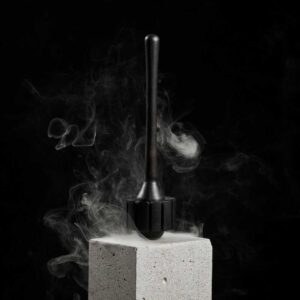 Technique 3: Molinillo
Technique 3: Molinillo
This ancient tool has been used to make drinking chocolate for hundreds of years. It’s tried, tested, and true. You’ll need an oversized vessel to hold your chocolate and your liquid, unless you really WANT to make a big mess (we won’t yuck your yum). Twisting the molinillo between your hands will naturally froth the entire drink at once, both emulsifying and thickening the body to your desired consistency. This is the go-to technique if you’re using a chocolate bar, and can even create a drink thick enough to add a shot or two of booze without fret.
A note on alt milks: Oat mixes well, almond has more texture, soy will be watery, and water still works but won’t be as thick. Use what you’d like; it’s chocolate and it’s going to be tasty no matter how you mix it!
